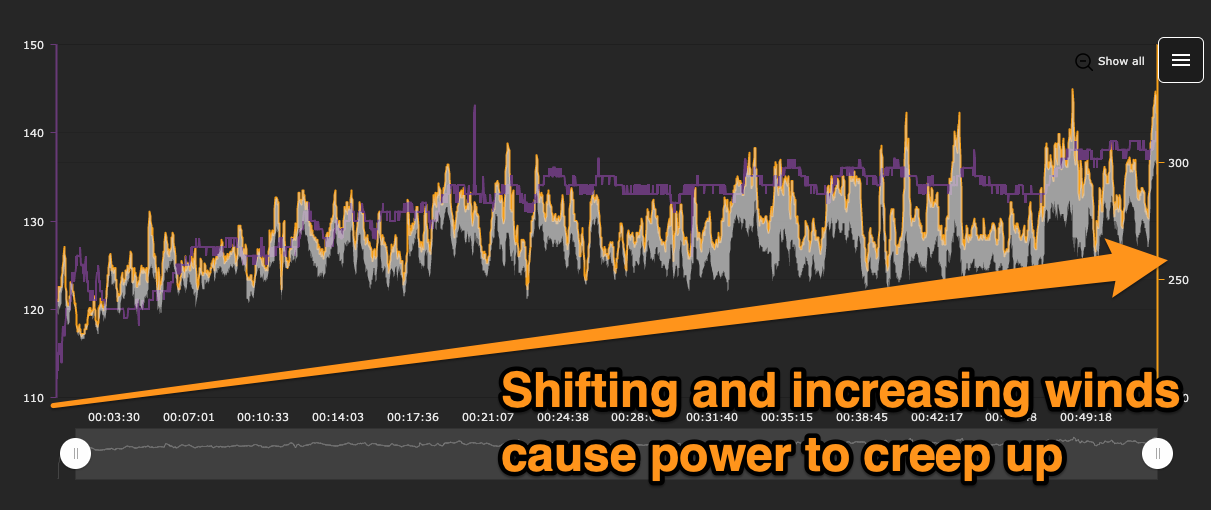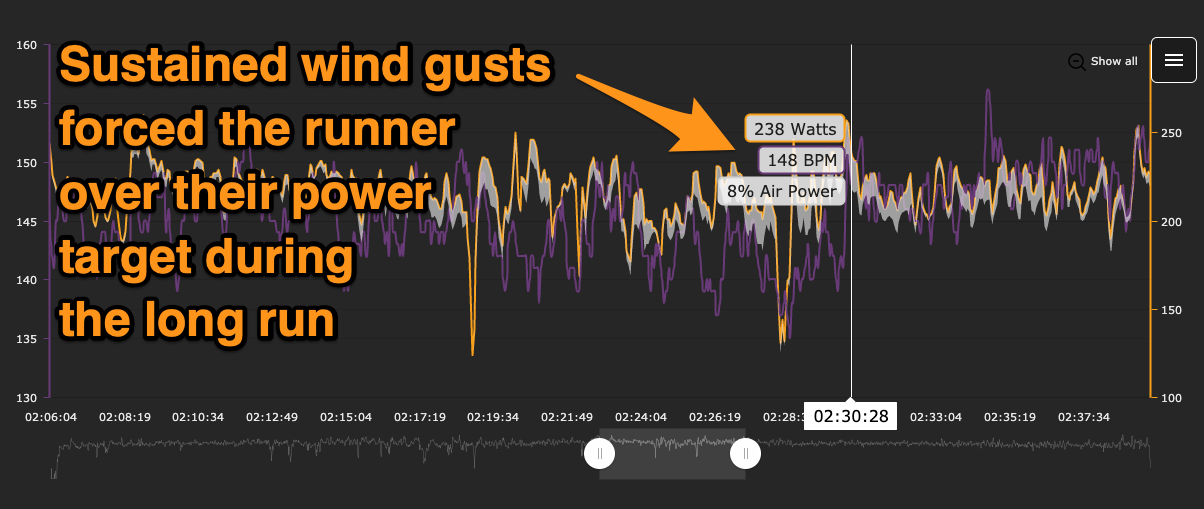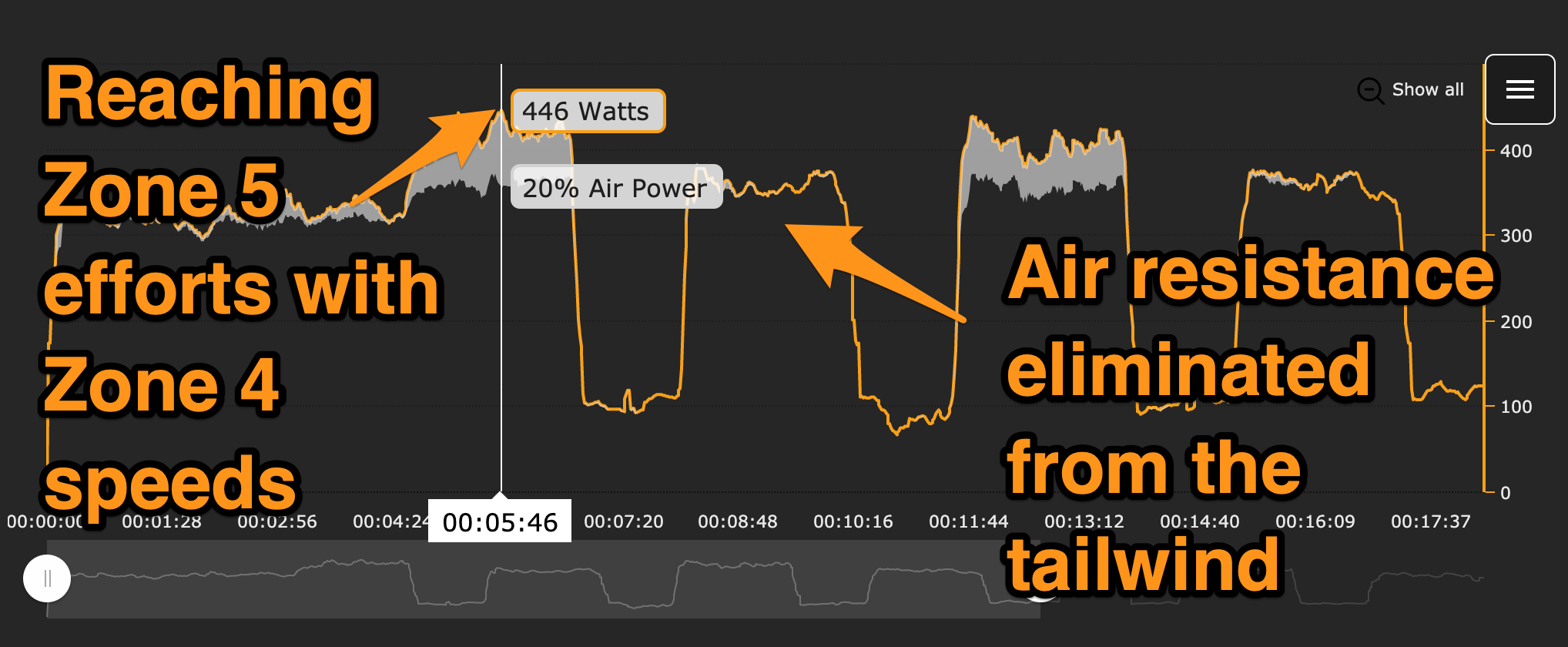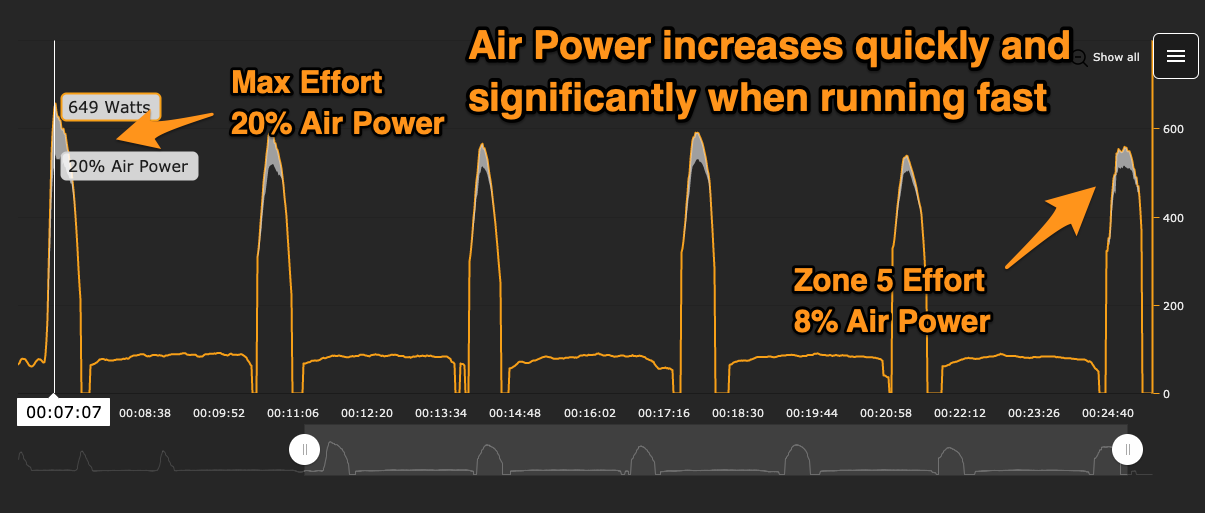New Power-Based Metric Reveals the Wind so You Can Benefit From Its Effects


Today, we introduce the first firmware update for the new Stryd. The headlining feature of this new firmware is the introduction of a new power-based metric: Air Power.
What is Air Power?
Air Power is the power required to overcome air resistance.
To best understand Air Power, we are going to look at three different running scenarios.
Scenario #1, Calm/Still Air: You are running 8 mph (12.9kph) in calm air conditions. You will be overcoming 8 mph worth of air resistance. Air Power will be equal to the cost of overcoming the air resistance produced by your running speed.
Scenario #2, Tailwind: You are running 8 mph with an 8 mph tailwind. You will be overcoming 0 mph worth of air resistance. Air Power will be equal to 0.
Scenario #3: Headwind: You are running 8 mph into an 8 mph headwind. You will be overcoming 16 mph worth of air resistance. Air Power will be equal to the cost of overcoming the air resistance produced by the wind and your running speed.
With this new metric, you will better understand the effects of the wind so you can minimize the wind’s effect when you want to run fast and use it to your advantage in training.
Runners can now quantitatively dial in their sense of exertion against the wind so they can approach every windy scenario with confidence that they will run at the correct intensity.
Please read on to discover what Air Power looks like, how Air Power should be used, and how we validated Air Power.
Note: The new Stryd reports total power to all sports watches and smart watches. The total power value already includes Air Power as part of the number. This new firmware is important because it separates out Air Power as its own metric so you can view the effect of air resistance on your run.
What does Air Power look like?
Air Power will be available for post-run analysis on the PowerCenter. Air Power is displayed as a percentage of your overall power that was used to overcome the wind and is displayed with a gray shaded area.
For example, here is a sprint effort where the runner is producing 617 watts of power. 12% of that power is Air Power and is being used purely to overcome air resistance.

Let’s dissect three different runs to take a look at what Air Power looks like and how it behaves in different real-world scenarios.
Run #1: Shifting wind conditions turned a moderate run into a threshold run

Here we have a tempo run in some moderate crosswind conditions. At the start of the run, the runner is traveling East and North with an aiding crosswind. However, when they turn to head back home in the West and South direction, they are now running into a hindering crosswind. As you can see in the image above, power slowly creeps up from 250 watts to 300+ watts by the end of the run. Air Power is a significant contributor to this power shift. Air Power only accounts for 2-4% of their total effort when heading out for their run, but the trip back home has a more significant effect on their total output forcing them to use 7-10% of their energy to overcome air resistance.
Here, it would have been wise to slow down a bit when running back home in order to stay at the intended power target.
Air Power gives runners the first reliable metric so they can consistently differentiate light winds and heavy winds. Light winds do not cost you much effort when you run into them, but they can be mentally taxing. If you know with confidence that light winds are not costing you much, you can continue to run into them without fear. On the other hand, heavy winds can cost you upwards of 15%+ of your overall effort. You must back off your effort to not risk burnout during these high wind scenarios.
Run #2: Watch out for wind gusts in the long run

Here is a long, slow run in light wind conditions. Generally, we see that air resistance has a very small effect on this run because the runner is doing a slow run and the wind is very light. However, the runners still had to be aware of the wind due to some gusty conditions. We see that some wind gusts push the Air Power contribution up to 8% of total power. With a power a target of 208 watts for this run, an 8% effect can be substantial because it can push this runner’s target beyond 224+ watts. So, it was important for this runner to be cautious and mindful of long, sustained wind gusts because the Air Power contribution could cause him to exert more power than he wanted to. If the runner is not mindful of the wind gusts, they risk burning through too many matches without completing their run.
Run #3: Tailor your workout with a strong wind

Here we have an interval workout being done in 15 mph wind conditions. We can see that running the interval into the wind at a high effort pushes the power to be 20% higher due to air resistance. However, air resistance is eliminated when doing the same effort with the tailwind.
In wind conditions like this, the runner has the choice to tailor their workout to suit their needs. They can choose to do all the intervals directly into the wind so they can reach high end power numbers without having to suffer from injury-inducing impact from going at high end speed.
Or, if they the runner is trying to improve their high end speed, they can run with the tailwind so it is easier for them to run faster without being slowed by air resistance.
Run #4: The importance of air resistance when doing Zone 5+ work

Here we have a series of max-effort and near max-effort sprints in still air conditions. Essentially, the runner has total control of the air resistance, based on how quickly they are running. Air Power increases quickly and significantly with higher running speeds. Air resistance accounts for 20%+ of total power when running at max effort and 8% of total power when running in Zone 5.
The implications of air resistance are clear from this test. It is important to try to minimize air resistance when running fast (or when the wind is strong.)
Install Instructions
In order to access the Air Power metric on the new Stryd, you must do all of the following steps.
Step #1: Download the latest iOS (5.1.2) / Android (5.17) app from the App Store / Play Store.
You must have the latest app in order to install this firmware. You will not be able to install this firmware unless you have the latest app.
Step #2: Install the latest firmware on your Stryd
Please install the new firmware on your Stryd device
Step #3: Record an activity with Air Power using a compatible phone app or sports watch
Right now, Air Power is only available if you record an activity in the following ways:
- You run with Stryd Power or Stryd Zones data field on your Garmin watch
- Please ensure that you have the latest most up-to-date version of Stryd Power or Stryd Zones on your watch. You should update your app via the Connect IQ app store.
- You run with your iOS phone
- You run with your Android phone
- You run with your Apple Watch
- Please ensure that you update your Stryd Apple Watch app after installing the latest iOS app update
While the power number displayed on other sport watches and Stryd offline sync includes Air Power, you will not see Air Power as a separate metric yet. We look to bring Air Power, as a separate metric, to other devices and syncing methods in the future.
Step #4: View your activity on PowerCenter
After you complete your activity, upload it to PowerCenter. You will see your Air Power in the graph.
FAQ
What else is new in this firmware release?
As part of this firmware release, we have extended Stryd’s internal recording capability to 36 hours. This means that Stryd will store your last 36 hours of running data on the device. What does this mean for you? If you ever forget to wear your watch, if your watch is out of charge, or don’t wear a watch, you can run with just Stryd. Stryd will record your running data so you can sync it with your iPhone/Android phone after the run is complete.
Will I see any Air Power when it is not windy outside?
Air Power represents the cost required to overcome air resistance. Air resistance is determined by a number of factors using your personal specifications, the conditions of the surrounding environment, and the relative speed of the air that you are running into. If there is no wind outside, you will be facing air resistance equal to your running speed. If there is wind, you will be facing air resistance equal to the wind speed you are running into plus your running speed.
How does Air Power change as I run faster?
Air resistance, and subsequently your Air Power, increases as you run faster. So, it is important to be more mindful of your Air Power when racing and when doing high-quality workouts.
Install Troubleshooting
Q: I cannot install the new firmware on my new Stryd. A: Be sure that the Stryd app on your phone is up-to-date.
Q: I cannot see Air Power in PowerCenter after installing the firmware. A: Be sure that you have the latest Connect IQ data field on your watch, or you have completed an offline sync after your run.
Q: Where can I see Air Power at? A: Air Power is only available on PowerCenter right now.

“A great wind is blowing, and that gives you either imagination or a headache.” - Catherine the Great
We believe that this quote states it best. The wind is going to keep blowing whether runners like it or not. You can either avoid it or try to understand it and use it to your advantage. Our new Air Power metric is our gift to the world of running. Runners can finally understand how much the wind is benefiting them and how best to minimize its effect so it does not slow them down.
If you have received the new Stryd or expect to receive it soon, plan to update your Stryd firmware, mobile app, and Connect IQ data field so you can access this feature.
If you are interested in purchasing the new Stryd to get the new Air Power metric, please click the following link to visit the Stryd Store. Visit the Stryd Store to buy the new Stryd >>
Best,
The Stryd Team

